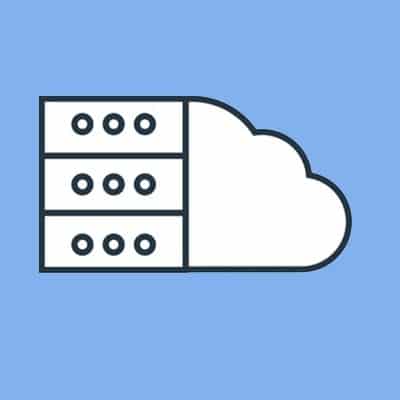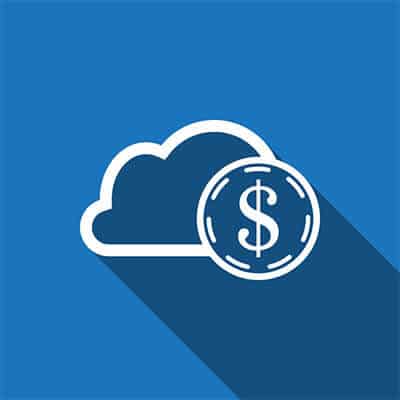What Can You Use the Cloud For? Do you need communications tools? Check. Hosted-VoIP and email. Do you need processing power? Check. Infrastructure as a Service and Platform as a Service. Do you need applications and storage? Check. Software as a Service and hosted Storage. The truth is that anything you can do with onsite hardware, you can accomplish with cloud resources that are billed per user, per month; or, per gigabyte. In the cloud, you can quickly deliver your business functionality, redundancy, and everything else that it needs to be effective. It works great for full-time, part-time, and temporary workers, alike; and, can be leveraged quickly, with only short setup processes before it is a viable, and mostly secure tool. What Are the Drawbacks? The drawbacks of cloud computing, especially in environments that are hosted by an outside service provider, are typically caught up in the lack of control your organization has over the hardware itself. Businesses can choose to create onsite “private” cloud systems that return the large capital costs to the company, but provide controls and management over their hardware systems as well as the accessibility needed to remotely access the system, among the other superlative aspects that cloud access brings to an organization’s IT. One of the major drawbacks is, ironically, cost. Since the IT infrastructure used to run the solutions is housed and managed by the service provider, they price solutions accordingly. If your organization needs 30 cloud licenses, the solution could get costly quick. What’s worse, if you have people leave your employ, and you don’t reactively cancel the cloud solution before your monthly license is up, you will be on the hook for the cost of the monthly fee. If this doesn’t seem like a costly scenario, think about the times when you assemble teams that work on projects. These projects require three or four cloud-based applications and other resources. If each member of a project team is costing the business hundreds of dollars a month in software, a month or two paying for solutions for a large team that has all but wrapped up its project just decimates the ROI of the project. In order to ensure that you aren’t paying for cloud-based resources that you don’t need to pay for, having a strategy in place to manage all of your organization’s cloud-based resources is important. At SRS Networks, we have a tried-and-true system to ensure that your cloud resources are managed and that you aren’t paying for more than you need to. Call us today at (831) 758-3636 for more information.
Some businesses, however, don’t, or can’t afford to trust that resources found in a public cloud can work for all of their business’ needs, but require the kind of accessibility a cloud solution provides. For these companies, only a hybrid cloud will do. Today, we will take you through the hybrid cloud, how it fits into a business’ IT infrastructure, and what hybrid clouds are typically used for. What Is a Hybrid Cloud? The hybrid cloud is the use of a combination of computing and storage products from public cloud providers and private, self-hosted cloud systems. Since there is no single point of failure, the hybrid cloud is a great solution for any organization that uses variable systems. Today’s business uses quite a lot of technology resources. From email to collaboration to application deployment to storage; there are a lot of moving parts. For most of these parts, there are now public cloud services that organizations can use to cut down on the large capital costs, set up, and management of computing systems that, while they may not hold too much sensitive data, are still critical for the sustainability of an efficient business. Why do Businesses Use Them? The modern business is doing more with less. As a result, businesses are looking to take advantage of cost-cutting actions. With the amount of IT that most businesses use, they would need additional hardware for every process. The capital costs of a new server are substantial, not to mention the setup and management of that hardware and the software systems used to facilitate business. This can put a major dent in a business’ ITT budget, and with the variable nature of costs, present major problems for CIOs and other decision makers when trying to budget their organization’s IT expenses. Public cloud services typically charge organizations by the user (on a monthly basis), providing a clear expectation of what the IT costs are. The availability to scale the amount of users up or back is also real easy, as is the setup and management of the solution as a whole. Typically, it is baked right into the cost of the solution. This is where the hybrid cloud solution comes in. A business may find that they need to have more control over certain parts of their IT resources and storage. This is difficult to do when you use public cloud resources that are managed by the service provider. For these systems, providing a faster (and often more secure) system that is hosted onsite is the right play. Some businesses only need a system for a short amount of time. For the company that already has its core processes handled through an onsite, private cloud solution, the hybrid cloud gives them the ability to add onto their existing infrastructure in times of need and scaling back when that is appropriate. It provides a great deal of flexibility to organizations that get busier in certain seasons. How Do You Go About Getting Them Both to Work for you? The main question many have about hybrid cloud adoption is how do you get them to work together? Since hybrid cloud platforms are used by companies that work in the legal, medical, or financial sectors, those examples are the best to look at if your business is […]
Understanding How Business Computing Has Changed It wasn’t all that long ago that if you wanted to watch a movie, you needed an actual physical copy of that movie in your possession at the time. However, with the assorted streaming services available to us today for a monthly fee, all we have to do is find and access the movie we want to watch. The same can be said of television series – if there’s a particular episode you want to watch, doing so on demand has never been easier. This “Netflix Model” runs parallel to how business software has been delivered. Like was once the case of a movie, there was once no other option than to purchase a license for a particular software solution for each user that required it. The same could be said of many other business requirements – if it was needed, it needed to be purchased outright. Today, acquiring solutions for a business is more similar to the Netflix approach than it is going to a video store to pick up a copy of what you want. Why Cloud Computing is Now the Standard As you might imagine, there are quite a few reasons that companies like Adobe and Microsoft now offer their software titles via the cloud, rather than selling their customers installation codes or discs. As cloud titles, Adobe Creative Cloud and Microsoft Office 365 offer their users a few key benefits over the traditional method of software acquisition… while enjoying a few key benefits themselves at the same time. Reduced Piracy By its nature, cloud-hosted software greatly reduces the chance of software piracy, as the solution remains protected by the developer, accessed by approved users. Naturally, other developers like this idea, and are therefore motivated to offer their titles in this way as well. Reduced Requirements for Businesses A business that leverages a cloud solution will find that these solutions can help diminish their need of on-site infrastructure. Take, for instance, the email solution that comes with Microsoft Office. Once, businesses would need to invest in and maintain the equipment to host their email. Now, thanks to cloud solutions, this large financial expense can be eliminated. Reduced User Restrictions I’m sure you’ve been in this position before: you have the time to get something accomplished, but because you lack the resources to do so in the moment, the opportunity is wasted. Many cloud-based solutions can help eliminate the likelihood of this situation by allowing a user to leverage more than one device. Adobe allows their Creative Cloud users to boost their operational flexibility by utilizing two devices. Reduced Financial Toll While a user once needed to commit a large, lump expense in order to procure a software title, cloud computing’s delivery has shifted the way things are done. Now, with solutions delivered based on a regular service fee, businesses can adjust their budgets to more fluidly incorporate an operating expense, as compared to a significant, one-time charge. In this way, it makes it generally cheaper for businesses to incorporate software titles into their workflows. Which sounds better to you… $3000, up front, for one version of a software title, or a monthly fee of $25 for the latest version of that title, with updates managed by the provider? Is the Cloud […]
Profitability is less the measure of being able to turn a profit, and more the measure of how much profit you can make. For the successful small business, the integration of technology can dictate what kind of annual margins you are looking at. For the new company, however, it can be something even more critical: the difference between setting a course for success, or wallowing in failure. Today we analyze the cost difference between hosting your IT in-house, or choosing to host it in the cloud.
The cloud has proven to be an extremely useful tool for the modern business. Not only does it provide anywhere-anytime access to applications, processing, storage, et al; it also delivers those products as a service, allowing you to budget for recurring costs rather than major upfront ones. This provides your organization with functional, supported, and secure computing environments that eliminate a lot of the support costs that traditional computing environments require. It sounds like a perfect scenario for small and large businesses alike, but things aren’t always what they seem, as a lot of cloud users have found that they have incurred several hidden costs by using cloud platforms. Today, we take a look at these hidden costs.





